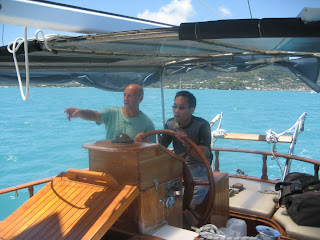After a few days resting and planning in San Diego, it was time to move onto another continent--South America. I had spent the week in San Diego pondering where to travel for the next month. My options were Central America, Colombia & Ecuador, or Uruguay. My original plan was to visit Central America, but after learning that October is the rainiest month and in the midst of hurricane season, I began to contemplate where else to go. I had heard about the gorgeous colonial towns, pristine beaches, snow-capped volcanoes and lush forests of Colombia and Ecuador and thus was tempted to go there. However, I ruled out this option as the weather was hot and unpredictable (can be quite rainy) and I did not want to be “running around” every few days to a different town. Thus, in the end, I decided to spend the next month in the small country of Uruguay, as I wanted to “settle down” and learn every nuance of life there. The country is culturally similar to Argentina but less hectic. In a sense, I wanted to stop being a traveler for a while and more of a “liver”.
My flight to Uruguay passed through Dallas and Buenos Aires. For the Dallas to Buenos Aires leg, I flew business class thanks to my friend Ming who works for American Airlines. It was my first time traveling on business class internationally and I enjoyed the perks-- Bose noise-cancelling headphones, amenity kit, comforter, lie-flat seat, real cutlery and a three-course meal with unlimited free alcohol!
However, this feel-good moment did not last long as the plane was forced to make an emergency landing in Cancun due to electrical problems. Hence, everyone spent the night in Cancun (having to go through unnecessary immigration and customs) allowing the mechanics to fix the issue. Well, at least I fitted a little of my Central America trip into my itinerary!
The next morning, I found out that the flight landed in Cancun due to missing fire extinguishers! I cannot believe they couldn’t find a few fire extinguishers in the Cancun Airport and place them on the plane. Instead, they had to fly them in from Miami the next morning.
I am writing this in the Cancun Airport, about to board my flight to Buenos Aires. My expected landing time is around midnight and my flight to Montevideo isn’t until tomorrow at 12:15pm. Thus, that means a night at the Buenos Aires Airport! I’ll post what happens there later, but for now, since I still have free WiFi access, I am going to post this entry.






















































